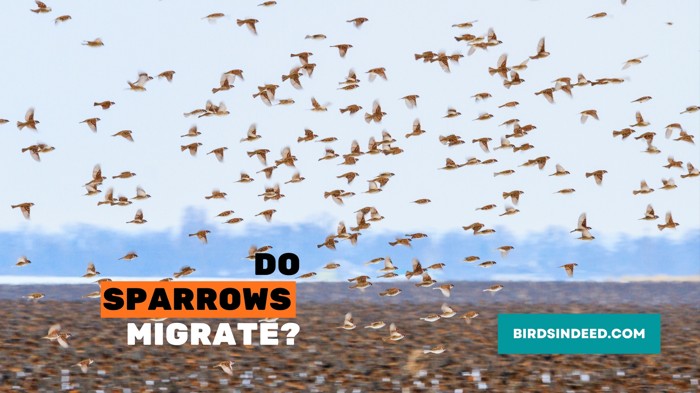Have you ever been curious about why and how birds migrate? Sparrows, just like many other bird species, participate in this intriguing natural phenomenon. However, the migratory habits of sparrows are not easily classified as solely migratory or nonmigratory. Some sparrow species undertake migratory journeys to ensure their survival, while others opt to stay in a particular area with favorable living conditions. The decision to migrate or not is influenced by various specific factors.
In this article, we will delve into the captivating world of sparrow migration, unraveling the reasons behind their unique journeys. Join us as we uncover the fascinating intricacies of sparrow migration and shed light on this compelling aspect of their lives.
Contents
Do Sparrows Migrate?
Sparrows have interesting migration habits. Some species migrate for survival, while others stay where conditions are favorable. Factors like food availability, climate changes, and breeding needs influence their decision. Understanding sparrow migration reveals their adaptability and survival strategies. Let’s explore the world of sparrow migration and uncover the secrets behind their journeys.

Why do Sparrows Migrate?
Sparrows, like many bird species, migrate as a way to survive and ensure the survival of their species. The specific reasons for migration can vary between different sparrow species and populations and are influenced by a combination of environmental and biological factors. Below, we provide some of the reasons why sparrows migrate:
Food Availability
Sparrows migrate to areas where food is more abundant, especially during the winter months when food can become scarce in their breeding range. By moving to regions with plentiful food sources, sparrows can increase their chances of survival and maintain their energy levels.
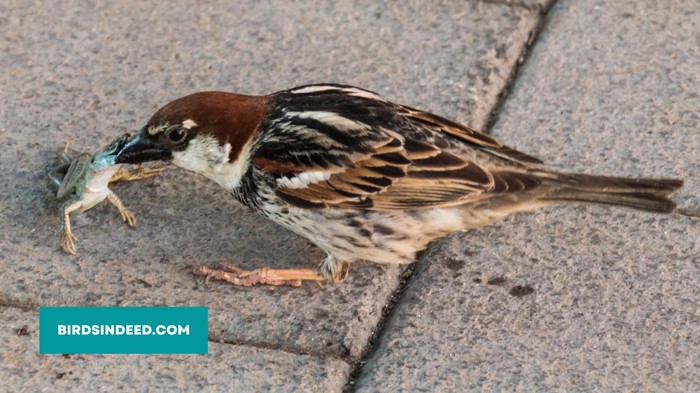
Harsh Weather Conditions
Migration allows sparrows to escape harsh winter weather, such as cold temperatures and snow, which can make it difficult to find food and survive. By migrating to warmer regions, sparrows can avoid these challenging conditions and increase their chances of survival.
Breeding Opportunities
Some sparrow species migrate to regions with favorable breeding conditions, such as an abundance of food. This provides the energy needed for successful breeding and raising their young. By migrating to these areas, sparrows can increase the chances of their offspring surviving to adulthood.
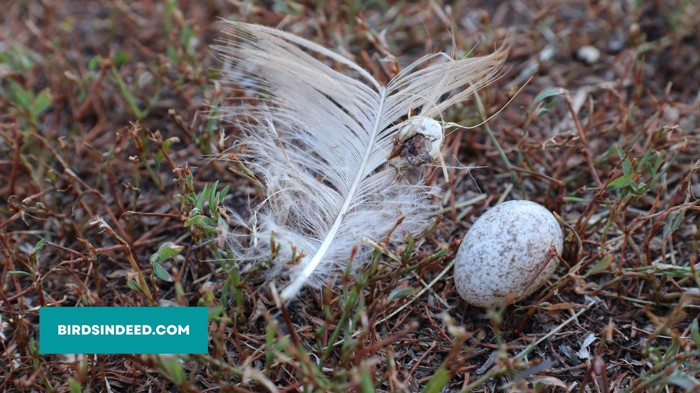
Population Regulation
Migration helps regulate the population size of some sparrow species and prevents overcrowding in their breeding ranges. By moving to different regions, sparrows can reduce competition for resources like food and nesting sites, as well as reduce the risk of diseases spreading in crowded populations.
Read: Why Do We Need To Save Sparrows?
Some Species of Migratory Sparrows
Many species of sparrows are migratory, and their migration patterns vary for various reasons, as we have already discussed. Below, we present some examples of migratory sparrows, along with information about their breeding and migration locations.
| Sparrows | Nesting/Breeding | Migration |
| American Tree Sparrow | It breeds in the boreal forests of Canada and Alaska, | It migrates to the North United States and Southern Canada. |
| White-crowned Sparrow | These species breed in the northern United States and Canada | During migration, the season migrates to the southwestern United States and Mexico. |
| Clay -Colored Sparrows | Mostly breeds in the Northern plains and the boreal forest of Canada. | It migrates from the Great Plains to Southern Texas. |
| Fox Sparrow | Breeds in the Alaska and Canada | Generally, it migrates to the western United States and northern Mexico. |
| Russet Sparrow | Usually, it breeds in central and south America | The Russet Sparrows migrate to the Himalayas and South East Asia. |
| Eurasian tree Sparrows | Eurasian tree Sparrows breed in eastern Europe to Asia | It usually migrates to the Himalayas and South East Asia. |
| Sind Sparrows | It generally breeds in the Sindh province of Pakistan and the region neighbor to India | Sind sparrows migrate towards Iran and west Pakistan. |
Why Do Some Sparrows are Non-migratory?
Non-migratory populations of sparrows are those that remain in the same region throughout the year, rather than doing seasonal migration. There are several reasons why some sparrows do not migrate:
Abundant food sources: If there is a consistent and reliable source of food available year-round, sparrows may not feel the need to migrate in search of food. This can be especially true in urban areas, where sparrows can find food in bird feeders and other human-made structures.
Mild climate: Sparrows may not migrate if the climate in their region is mild and suitable for survival and breeding year-round. This can include areas with mild winters and consistent temperatures, which allow sparrows to find food and shelter without having to migrate.
Lack of migration instincts: Some populations of sparrows may have lost their migration instincts over time, especially if they have lived in an area for multiple generations without having to migrate.
Urbanization: Sparrows may not migrate if they have adapted to urban environments and find food and shelter in human-made structures. In these environments, sparrows may not feel the need to migrate to find food and shelter.
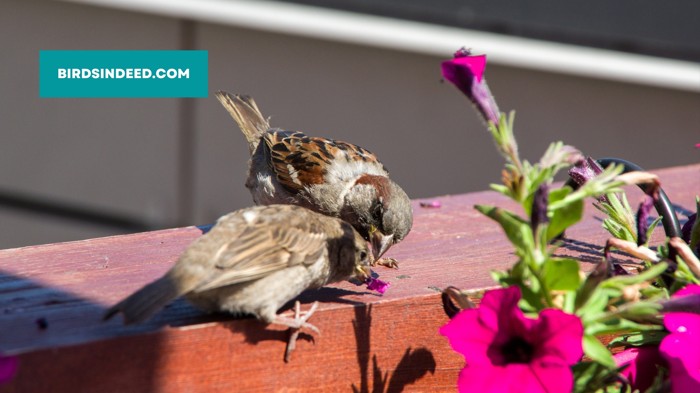
The migration patterns of sparrows can vary widely depending on the species and the specific population, so these reasons may not apply to all non-migratory sparrows. And migration patterns can change over time based on environmental conditions, so non-migratory populations of sparrows may become migratory in the future if conditions change.
The Most familiar & Non-migratory House Sparrows
House Sparrows are non-migratory because they have successfully adapted to living in human-made environments year-round. They are native to Europe, Asia, and Africa, but they have been introduced to many other parts of the world and have become one of the most widely distributed bird species. Their ability to survive in urban and suburban areas provides them with a consistent food supply and shelter, eliminating the need to migrate in search of better resources. They feed on a variety of food sources, including grain, seeds, and insects, and they can find these resources even in harsh winter conditions.
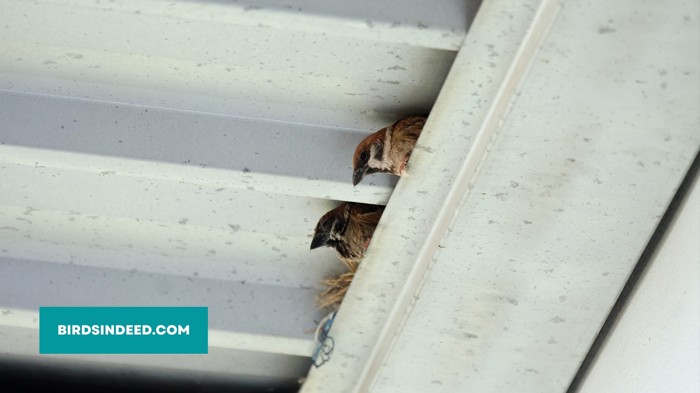
And most importantly House Sparrows have a strong site fidelity, meaning that they are known to return to the same locations year after year. This, combined with their ability to adapt to changing environments, allows them to thrive as non-migratory birds.
Sparrows in Winter
In winter, some sparrow species migrate to warmer climates while others remain in their breeding ranges.
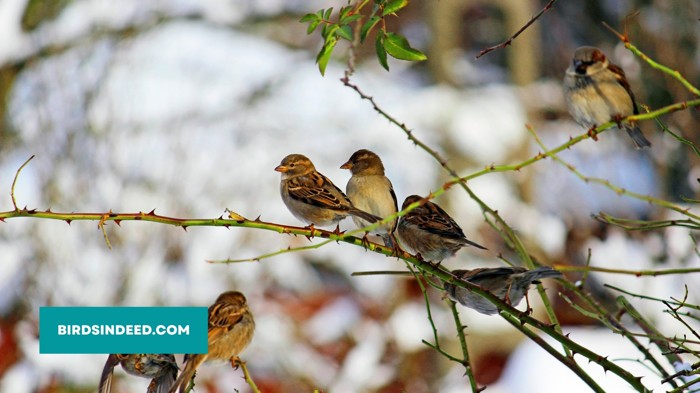
Migratory sparrow species typically fly to warmer regions in the southern US, Mexico, or Central and South America. They do this to avoid harsh winter conditions and to find an adequate food supply.
Non-migratory sparrow species stay in their breeding ranges throughout the winter. They may change their behavior and habitats to adapt to the colder weather and decreased food availability. In winter they might form flocks to conserve heat and forage for food in new areas.
That’s All Folks!
According to research and some forums, sparrow migration has an important aspect of biology and ecology. During migration, sparrows travel in flocks and follow predetermined routes, relying on instinct and the earth’s magnetic field to guide them. And the sparrows who do not migrate also play an important role in maintaining the balance of ecosystems and allowing new plants to grow in different areas.
Hyeat is the founder of Birds Indeed, a blog dedicated to all things avian. With a passion for birds and a deep understanding of their behavior, Hyeat shares their knowledge and experiences with readers. Join Hyeat on their journey to learn more about the diverse and beautiful world of birds.

